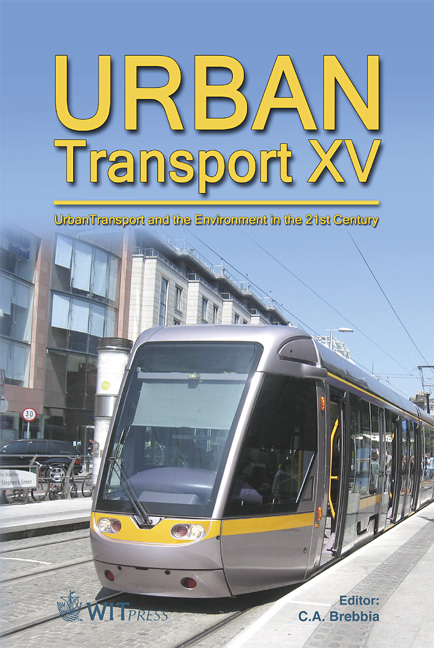Development And Application Of A Strategic Modelling Tool For The Evaluation Of Air Pollution Mitigation Strategies For Urban Freight In Sydney
Price
Free (open access)
Transaction
Volume
107
Pages
12
Page Range
529 - 540
Published
2009
Size
249 kb
Paper DOI
10.2495/UT090471
Copyright
WIT Press
Author(s)
S. Greaves
Abstract
This paper details the development of a strategic-level modelling tool designed to provide a flexible approach for decision-makers to evaluate the air quality and greenhouse gas mitigation (GHG) impacts of mitigation strategies for urban freight. The model, known as STEAR-F (Strategic Tool for the Environmental Analysis of Road Freight) combines available information on freight travel, fleet characteristics, and emission factors to provide estimates of GHG and non-GHG emissions. Following details of the model development, STEAR-F is applied to evaluate strategies currently under consideration in Sydney. These include accelerated vehicle scrappage programs, diesel retrofit programs, Low Emission Zones (LEZs), alternative fuel programs, and educational/information programs. Results show that by 2015, while net reductions in non-GHG emissions are anticipated as the fleet modernises and new emissions standards come into force, GHG emissions are expected to grow by 40% due to the increase in commercial vehicle kilometres travelled (CVKT). Scenario testing suggests that accelerated scrappage programs, retrofit programs, and LEZs, could achieve further reductions in non-GHGs of 5-10% respectfully. Alternative fuel programs are anticipated to reduce some of the reliance on fossil fuels, but emissions benefits are marginal due to lower operational efficiencies and fuel life-cycle concerns. A package of educational/informational strategies could achieve savings of around 10% in GHGs assuming relatively conservative rates of participation. Keywords: greenhouse gases; air quality; road freight.
Keywords
greenhouse gases; air quality; road freight





